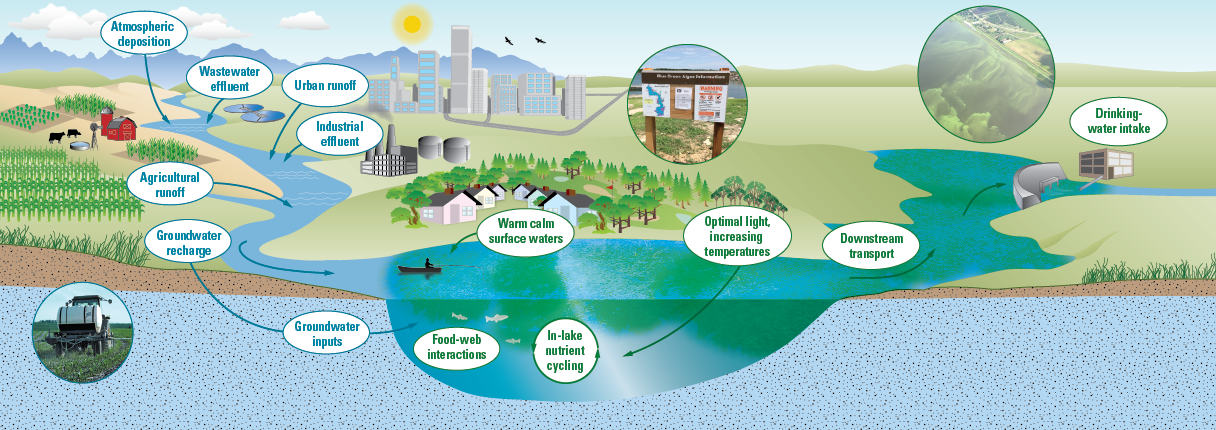Causes of CyanoHABs
Causes of Cyanobacterial Blooms
Both physical and chemical factors contribute to the formation and persistence of cyanobacterial blooms in freshwater systems, including:
-
light availability;
-
water temperature;
-
alteration of water flow;
-
vertical mixing;
-
pH changes;
-
nutrient loading (both nitrogen and phosphorus); and
-
trace metals.
Because of the interplay of these factors, there may be large temporal fluctuations in the levels of cyanobacteria and their toxins in predominating species that occur largely on seasonal time scales. Specifically, the ratio of nitrogen to phosphorus, organic matter availability, temperature, and light attenuation, likely play an interactive role in determining corresponding HAB composition and toxin production.

Source: Graham, J.L., Dubrovsky, N.M., and Eberts, S.M., 2017, Cyanobacterial harmful algal blooms and U.S. Geological Survey science capabilities (ver 1.1, December 2017): U.S. Geological Survey Open-File Report 2016–1174, 12 p.
View a larger version of this image
How Human Activities Increase the Occurrence of Cyanobacterial Blooms
There is widespread agreement within the scientific community that the incidence of HABs is increasing both in the U.S. and worldwide. This recent increase in the occurrence of HABs has been attributed to increasing anthropogenic activities and their interaction with factors known to contribute to the growth of cyanobacterial blooms. Point sources (which may include discharges from municipal and industrial wastewater treatment plants, concentrated animal feeding operations (CAFOs), Municipal Separate Storm Sewer Systems (MS4s), stormwater associated with industrial activity, and other) and non-point sources (which may include diffuse runoff from agricultural fields, roads and stormwater), may be high in nitrogen and phosphorus and can promote or cause excessive fertilization (eutrophication) of both flowing and non-flowing waters.
To learn more about nutrient pollution please visit:
